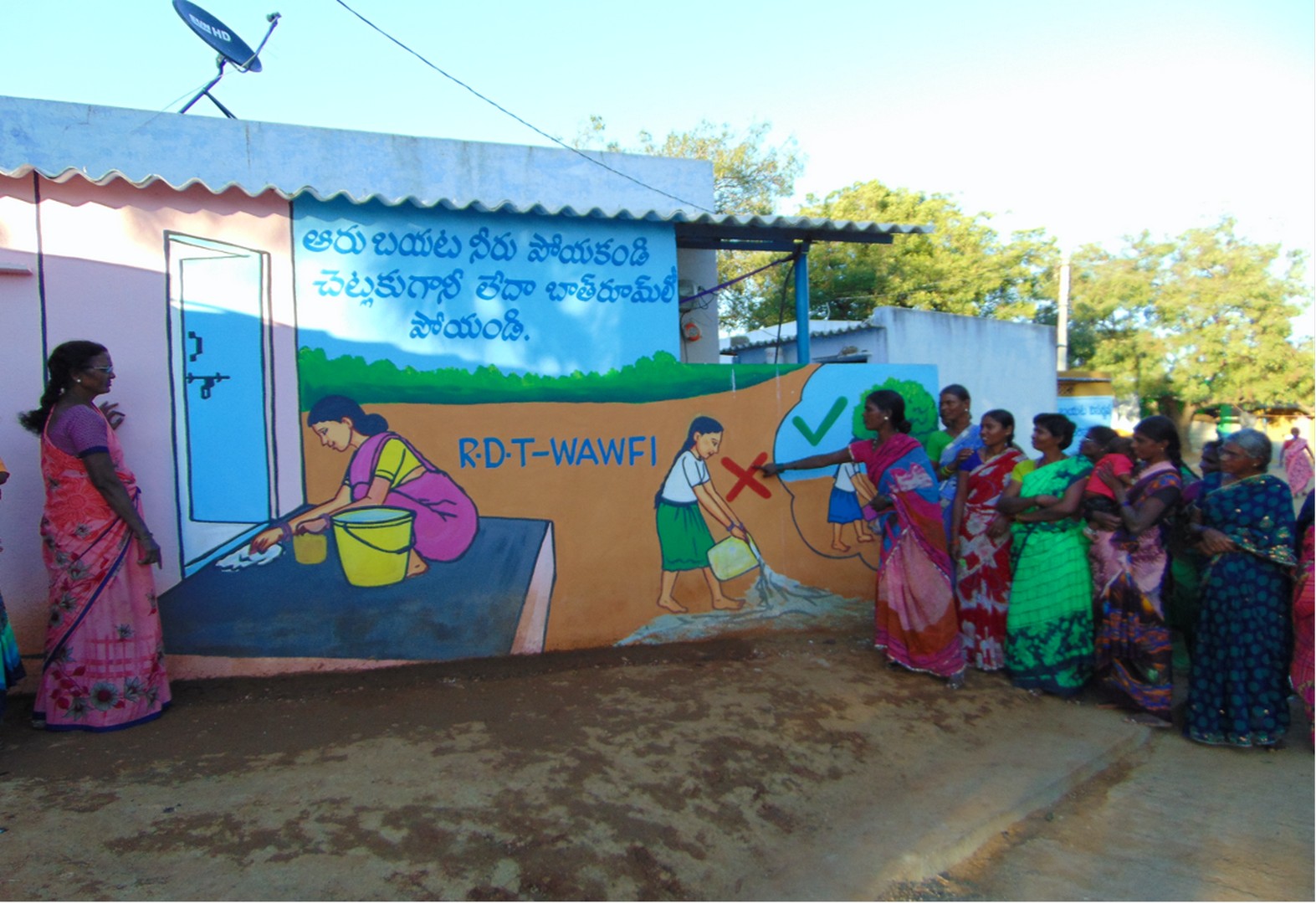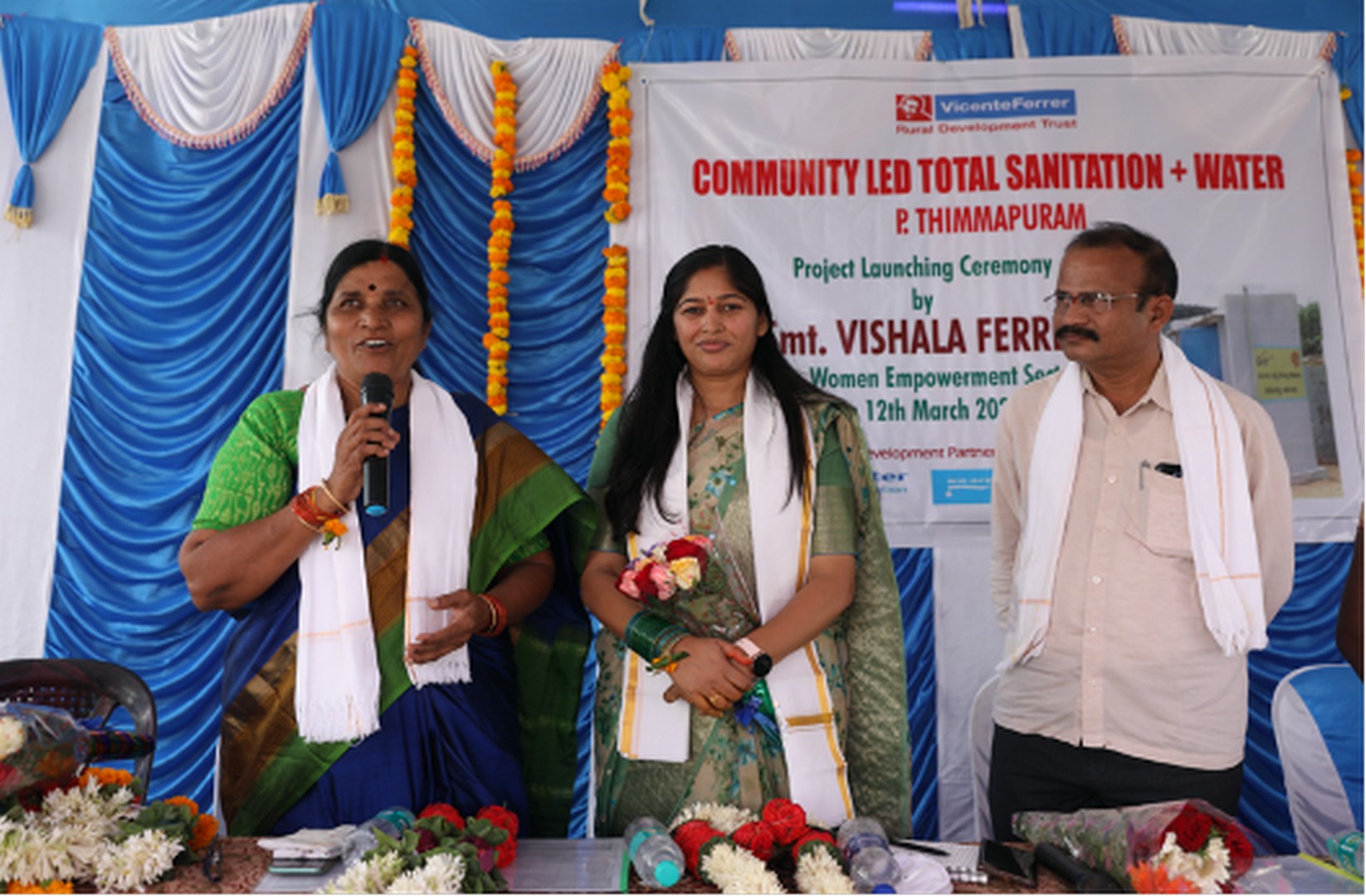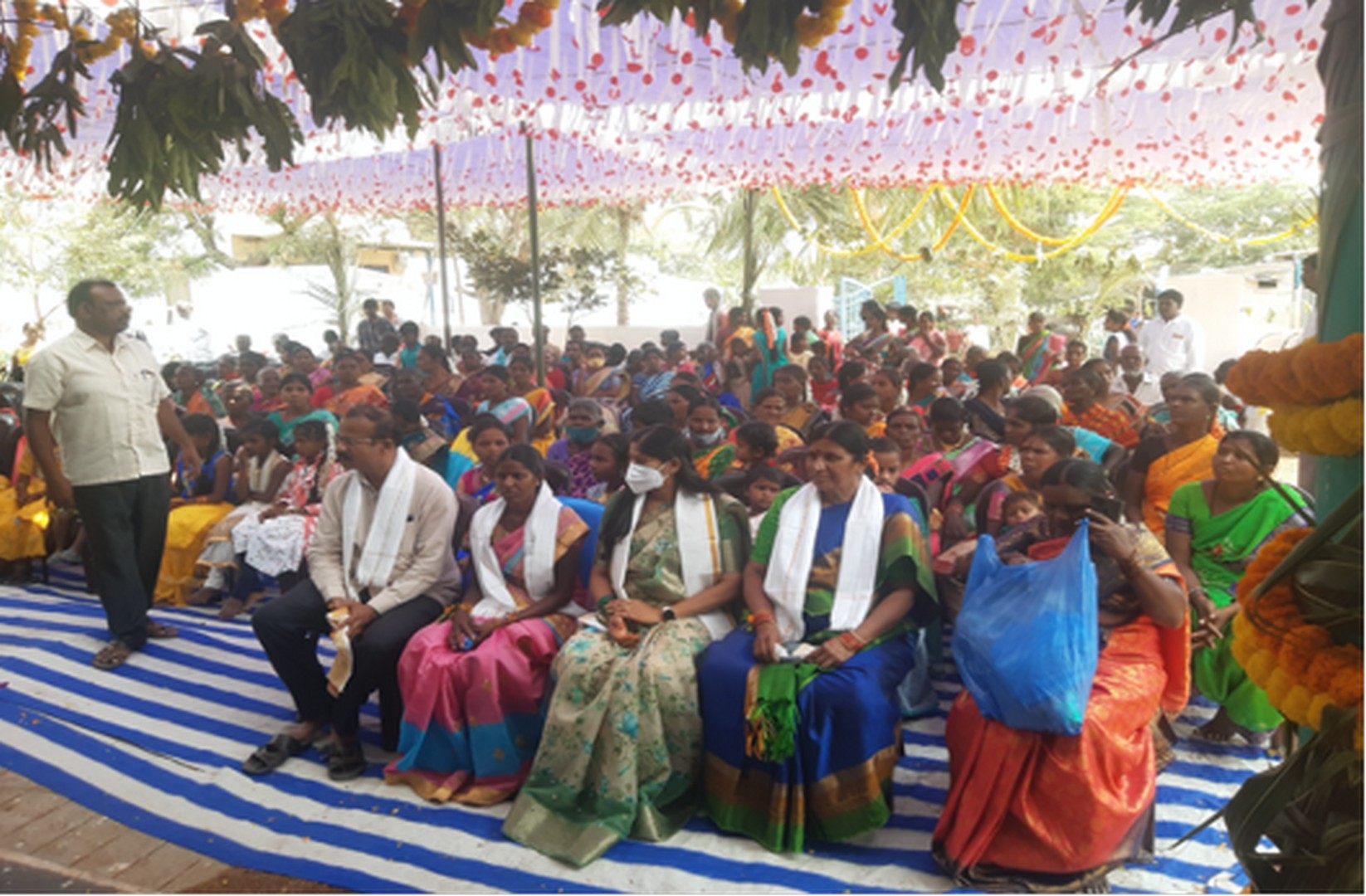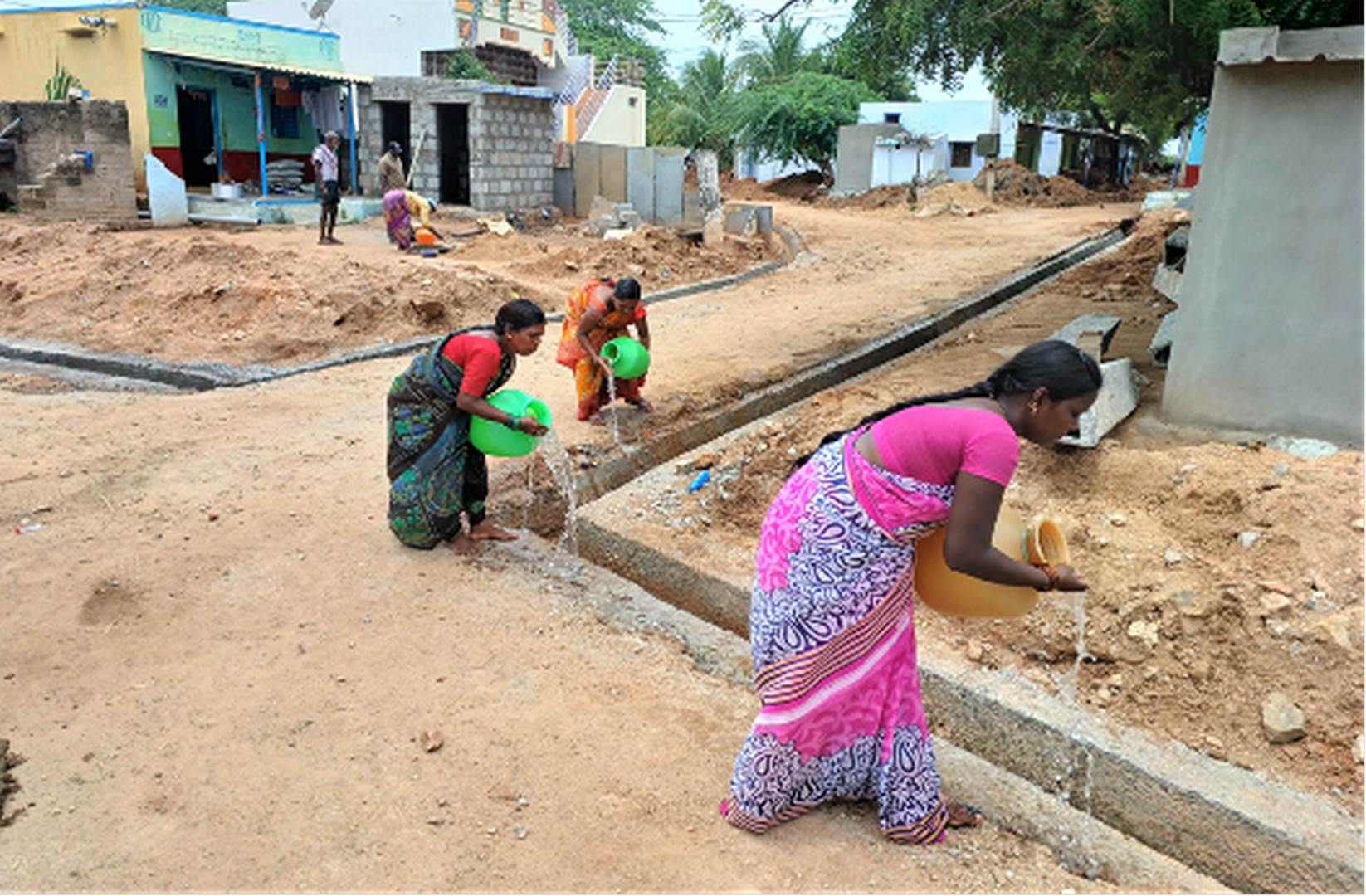P. Thimmapuram Village, Kuderu Mandal, Ananthapuram Dist., Andhra Pradesh, India
In collaboration with

February 2022 – January 2023
Provide sanitation facilities to eradicate open defecation. Develop awareness and knowledge for proper hygiene practices.
Objectives
- Improve the living conditions of villagers by providing access to water, sanitation and hygiene.
- Educate the community about water use, the importance of using toilets and latrines, and how to do it properly.
- Improve accessibility to household water supply.
- Create a clean environment to enhance the hygiene conditions of the community.
Beneficiaries
249 directs
Family members who have access to toilets and hygienic facilities.
1,000 indirects
Community members.
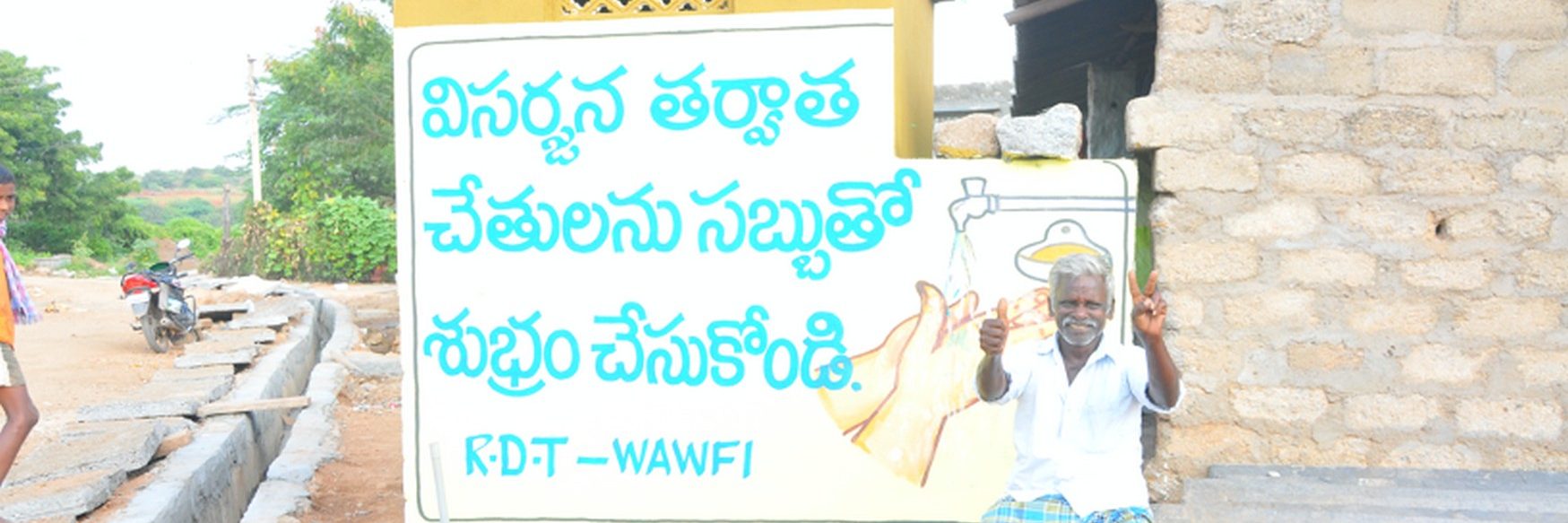
On the ground
Lack of sanitation facilities in an area not reached by the Swachh Bharat Mission.
According to the UNICEF report, before 2015, nearly half of the population in India experienced the indignity of open defecation in fields and public places due to a lack of access to proper facilities and a lack of education on how to use them correctly.
When the Government of India launched the Swachh Bharat Mission in 2015, the country began rapidly eradicating open defecation. As a result, by 2019, the number of people without access to sanitation had significantly decreased.
The practice of open defecation leads to tons of feces being spread in the environment and exposes children to direct contact with excreta. The risk of spreading diarrhea and waterborne diseases is exacerbated by the lack of proper toilets, latrines, and handwashing facilities in households and communities. Poor sanitation also hinders national development as workers suffer from illnesses and have reduced life expectancy. As a result, they earn less and are unable to afford education and provide a better future for their children.
At the same time, less than 50% of the population has access to safely managed drinking water. Many districts suffer from extreme water depletion due to lack of planning and maintenance. P. Thimmapuram, in the district of Ananthapuram, is one such village that faces water and sanitation challenges. The village did not have the opportunity to receive toilets under the Swachh Bharat Mission program. Out of 51 families, 40 did not have access to toilets and bathrooms. Moreover, they do not receive sufficient water due to poorly planned and managed water supply system. Although the households received taps, they cannot get a regular water supply as the system was directly connected to the pipelines without having storage tanks. Frequent power cuts also hindered access to water from households.
To further worsen the situation, wastewater flowed openly through the streets, stagnating in low-lying areas and leading to mosquito breeding. The unhygienic conditions in the village caused multiple diseases, especially during the rainy season.
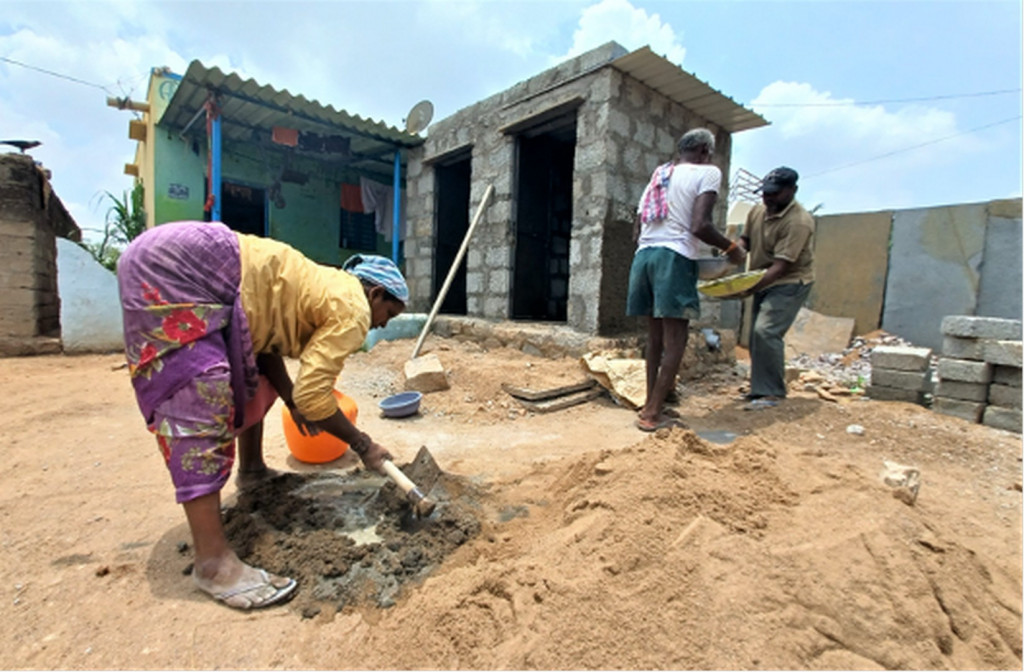
In detail
The development phases of the project are as follows:
- 1. Improve knowledge in the community by organizing meetings. The community knowledge enhancement phase involves organizing meetings and orientation sessions to improve the understanding and awareness of the community regarding various aspects of the project. In this case, 11 meetings and orientation sessions have been conducted. The purpose of these meetings is to provide information and guidance on the project logistics, the roles, and responsibilities of the individuals involved, including the Community Development Committee (CDC), and the selection of local suppliers and labor Likewise the process of fee-setting, as well as ensuring effective follow-up and supervision of the installations.
During these meetings, the community members are informed about the overall plan and objectives of the project. They are provided with detailed explanations of how the project will be executed, including the various stages involved and the tasks to be performed by different stakeholders. The roles and responsibilities of the CDC and community members are clearly outlined to ensure everyone’s active participation and contribution to the project. - Technical supervision, facility design, and cost estimation. During this phase, it is essential to have qualified professionals and specialists in each field to ensure the quality of the designs and proper construction supervision. In addition, community participation is encouraged in decision-making regarding the design and implementation of the facilities, ensuring that they align with their needs and preferences.
- Construction of toilets and bathrooms for 40 families in the target homes.
- Procure the supply of water through taps to homes.
- Construction of the surface drainage system. This involves designing and building a system that effectively manages and directs surface water flow, preventing waterlogging and ensuring proper drainage.
- Ensure the participation of the community in the execution of the project.
- 7Establish the method of follow-up and monitoring of the process.
- Ensure post-project follow-up. This involves designing and building a system that effectively manages and directs surface water flow, preventing waterlogging and ensuring proper drainage in the targeted area.
The project is based on complete confidence in the knowledge and experience of the communities, and they are the main actors in the entire process. In this way, the community and the Community Development Committee (CDC) played a fundamental role in each stage of the work.
Without involving any civil contractor, the Habitat Department of the Rural Development Trust ensured the participation of the communities and the CDC with the help of the Community Organizer, Civil Engineer, Team Leader, Regional Engineer, and Assistant Technical Director under the direction of the Sectorial Director. The technical team initially conducted the inspection and prepared the designs and cost estimates. Based on all this, the project was executed.
By procuring the materials locally, they ensured the involvement of the CDC to increase their accountability and maintain transparency. While the other materials, such as the pipes, electric pumps, storage tanks, cement, and paints, etc., were purchased through the Central Procurement Department according to the amounts assigned in the cost estimates.
The non-involvement of the Civil contractors and the community organization process were factors that helped to complete the project on time, with better quality and with greater community participation.
Prospects for sustainability
Rural Development Trust has been working in P. Thimmapuram for over three decades. This long-standing partnership enables high-level cooperation in the implementation of development programs.
In accordance with the foundation’s policy, a methodology of organization, participation, and community involvement in decision-making has been adopted to implement the project. Priority is given to building the capacities of the communities to educate them about water cycle knowledge, sanitation, personal hygiene, and environmental hygiene. The aim is to achieve efficient post-project maintenance.
The Community Development Committee (CDC) is established as a leadership platform to act as a bridge between the organization and the people. Its primary responsibility is to oversee and monitor the development programs, engage in planning and implementation, and address any local issues. It is a frontline platform composed of progressive leaders who are trained in program management.
In this project, the CDC is involved in all execution processes, including exploring local materials and suppliers, determining fees, and making payments.
When a problem arose with a local farmer, the CDC negotiated with them and resolved the issue promptly without causing any obstacles to the project’s progress. In addition, the Panchayat (a democratic institution responsible for local administration and decision-making at the village level) of P. Thimmapuram was also involved in ensuring the future maintenance of the project.
The Central Procurement Department purchases materials that are not available locally, giving priority to quality and competitive rates.
TThe Habitat Department prioritized quality maintenance by selecting suitable materials, experienced labor, and adequate technical supervision. All these initiatives contribute to the sustainability of the project.


